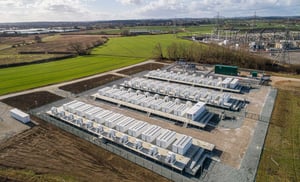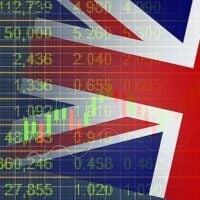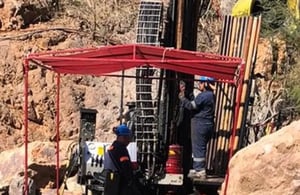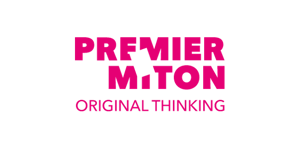President & CEO Rohan Hazelton discusses DynaResource, Inc (OTCQX:DYNR) breakthrough in gold recovery technology, boosting recovery rates from 70% to a potential 95% at the San José de Gracia project in Mexico.
Q1: Before we talk about the impressive gold recovery enhancements, could you provide some background on the San José de Gracia district? You’ve consolidated 33 individual mining concessions into the project so far. What makes this district so promising for gold production?
A1: Great. Thanks very much, Giles. Yes, we have a concession area of 33 concessions that totals just approximately 10,000 hectares. This is a very large area. Even now, we’re only primarily exploring and mining within a smaller area of that of 4,500 hectares. And there’s still even potential to grow outside of that if we look to any future acquisitions of concessions. Today, even within the area that we see, we see a multi-million-ounce potential for exploration growth. We see definitive targets that we have outlined to lead at least to sort of a half a million to a million-ounce potential that we see. And then beyond that, it will depend on our exploration success. But overall, the district is extremely prolific, both in its past history of a million ounces of a half an ounce or one ounce to two ounce per ton in the past, and then in the more recent history of what DynaResource has been mining for the last 10 years.
Q2: Turning to your recent update on gold recovery, you announced metallurgical test results suggesting up to 95% recovery rates. For those unfamiliar with mining processes, could you walk us through the basic steps of how gold goes from ore to a saleable product?
A2: So, in the case of San José de Gracia, we produce a gold concentrate at the end. So, we start with the underground mining, approximately 800 tons per day. We bring that in, we crush it and put it through a flotation mill, which again, primarily crushes down to a smaller size, uses certain reagents to then float the gold and get it out of the minerals that it’s hosted in. And then ultimately the final product is a concentrated rock material that looks like sand and is a flotation concentrate. Here, what we’re talking about in these results is that we’ll be adding a gravity circuit to produce a second concentrate, still a similar product, but through a different process of the gravity circuit. Ultimately, then the concentrate we ship, we ship down to the port and sell it to our offtake partner.
Q3: You’ve reported laboratory recovery rates of 95%, whereas your operational target is just 80%. Could you explain the difference between these figures and what challenges exist in achieving higher recovery rates in the field?
A3: So, we’re very pleased with these recent lab results that show a 95% recovery. What’s important about those results is they were taken from a composite of different rock material and minerals from our various deposits, which have different metallurgical components. So, it’s important to see how they all are blended or react in different situations. And so, with these 95% results in a lab environment where it’s easier to control and so on, and easier to ensure that you get the crushed rock down to a minimum size, that is what then with the gravity tests and the gravity circuit has led to those results. In the real world, we won’t be able to match all of those conditions, but we are extremely positive and optimistic that these results with installing a new gravity circuit will lead to the 80%. That’s our target. But I believe that these lab results indicate that we likely have opportunity to get higher and potentially as high as the company in early years of the operations did have recoveries in the mid to higher 80s. And that was primarily because there was a gravity circuit. Now, the operation was smaller at the time, and that’s why the gravity circuit was displaced as the mill and throughput grew. And we’re looking to put back in, again, a more sophisticated gravity circuit.
Q4: Your company’s presentation shows $33 million invested into operations since 2017. With current gold prices and continued operational improvements, how is DynaResource maximising value for its investors?
A4: All those initial investments were to open up the various deposits and mines that we have and construct the initial plant and then, in particular, growing the plant to what it was. So, this initially was 100 ton per day operation that over the past almost 10 years, we’ve grown to an 800 ton per day operation and continue to look at ways that we may even further increase that throughput in future years to be able to increase gold production. So, we have a very strong base of assets in terms of ounces in the ground, mines that are available for production, as well as fixed assets in terms of plant and other equipment.
Q5: DynaResource also plans to release an SK1300 technical report soon, similar to Canada’s 43-101. What should investors expect to learn from this report, and how does it fit into your broader growth plans?
A5: We expect that report to come out in the next month or a bit. We’ve actually delayed it just slightly in order to incorporate these new metallurgical results, which we think are very important to the future projections of what we can produce. The SK1300, we’re listed on the OTCQX at the moment in the U.S., and hence why we have to put out an SK1300. We will shortly thereafter update it very slightly to really more formatting changes to a 43-101 for Canadian purposes. The importance of this tech report is it really is what will allow us to uplist to a major exchange later this year. We’re still targeting Q3 to uplist and possibly onto the TSX or TSX-V. And that will allow both our shareholders access to greater liquidity and importantly, allow the company to access greater sources of capital, get a better recognition in the capital markets, and look at potentially raising funds for additional investment and growth, in particular, in exploration.




































